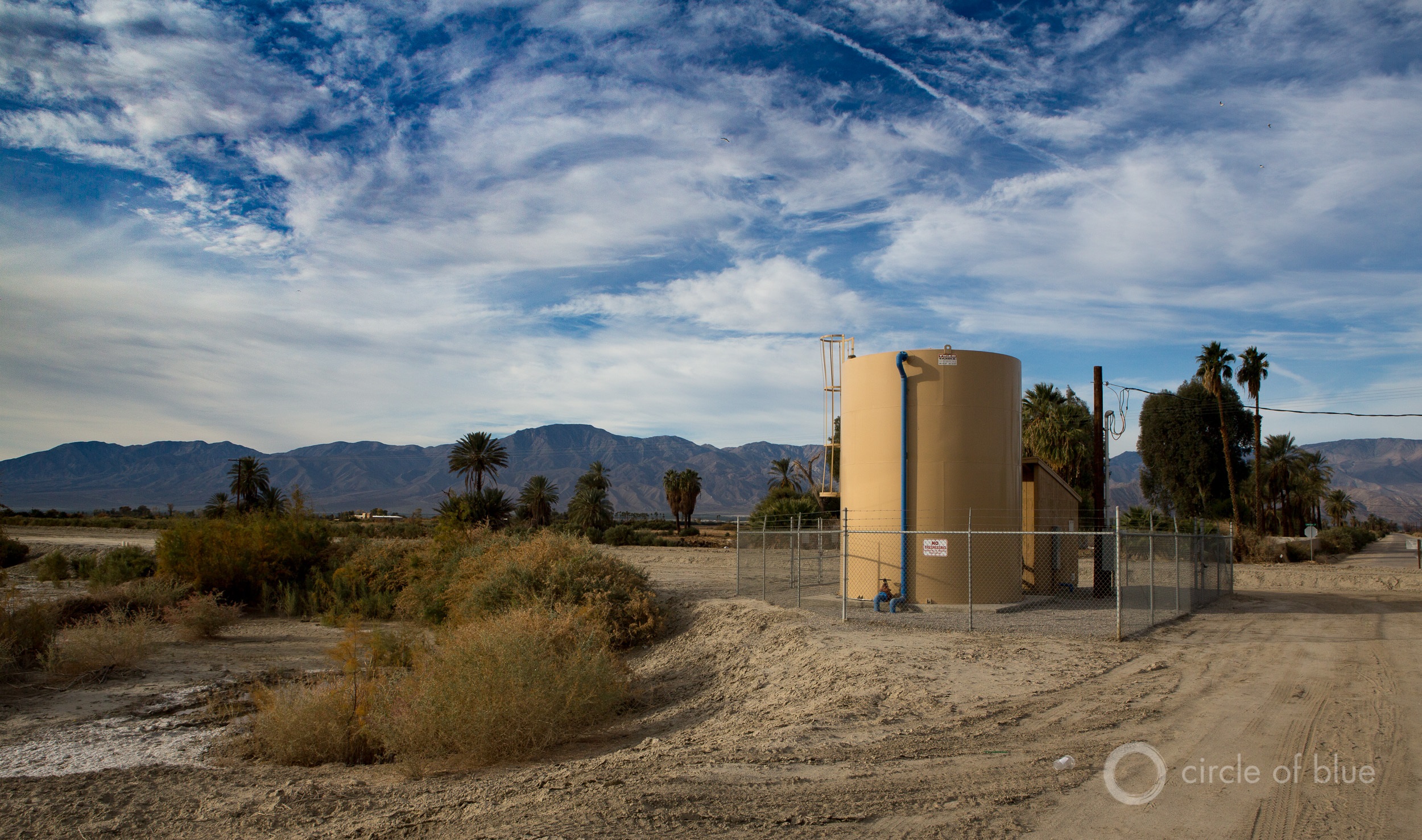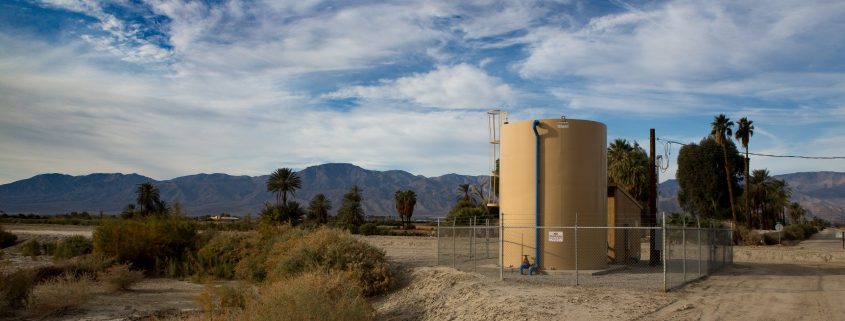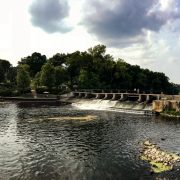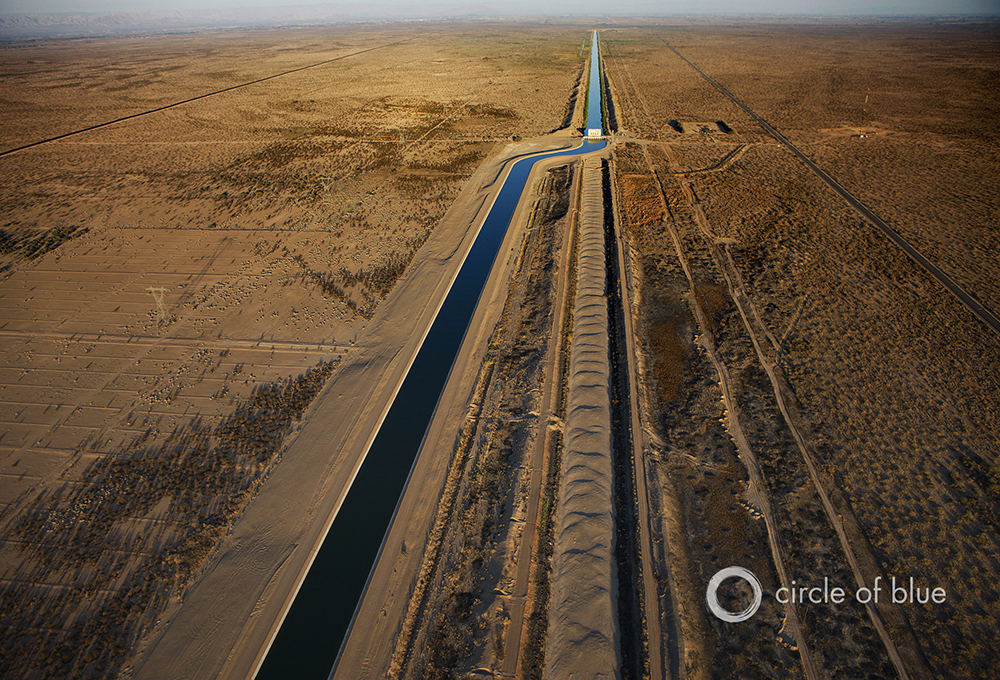California Water Board Delays Affordability Report
More time needed to work out details, regulators say.

A water storage tank in Mecca, an incorporated community north of California’s Salton Sea. Photo © J. Carl Ganter / Circle of Blue
By Brett Walton, Circle of Blue
Citing the need for more deliberation, California regulators delayed publication of a report that will outline their preferred plan to fund and manage a statewide program to help poor residents pay their water bills.
As water rates increase in the United States, governments and utilities are exploring new forms of financial aid. Some utilities run water bill assistance programs, but California is marking unexplored territory. It would be the first state in the nation to operate a state-funded program for water.
The State Water Resources Control Board’s report, required by a state law passed in 2015, was supposed to be submitted to the Legislature on February 1. It has been delayed indefinitely, according to Andrew DiLucca, a board spokesman.
Observers were not alarmed by the move. “It’s not uncommon for reports to be delayed,” Ezrah Chaaban, chief of staff for Sen. Bill Dodd, told Circle of Blue. “It’s the way that things are in Sacramento.”
Dodd, a Democrat from Napa, sponsored AB 401, the 2015 bill that ordered the affordability program.
Drinking water funding is already on the Legislature’s agenda this year, albeit in different form. Lawmakers will take up SB 623, a bill to provide aid to utilities and schools to operate and maintain their water systems. Gov. Jerry Brown’s budget proposal includes $4.8 million to administer the program, which would raise an estimated $140 million in revenue annually through a $0.95 water bill surcharge and taxes on farm fertilizers and dairies. The bill was proposed last year but did not have enough support to pass.
The Water Board’s affordability program, meanwhile, would deliver subsidies to individual households. The task of designing such a program is “descriptively simple, but highly technically complex,” Max Gomberg, the official in charge of the project, told Circle of Blue last year. The Water Board must decide what benefits eligible households will receive, how the program will be administered, how to fund it, and how much money will be needed.
Given the difficulty of defining affordable water and establishing a new government service, none of the questions is particularly easy to answer. At least two are sticking points that the board still needs to address, according to DiLucca.
One question is how to distribute benefits to recipients — through water bills, energy bills, or some other means.
DiLucca offered a hypothetical example. Many low-income customers might be renters, who would not necessarily receive a water bill directly: “If the assistance is provided on the gas or electric bill, and the benefit amount is a function of the water bill, how will the electric or gas utility track households that move from one water utility service area to another and therefore qualify for a different level of assistance based on their new address?” he mused.
Another question is the form the benefit will take. Will it be a discount of 20 percent or 30 percent? Will it be a statement credit? Or will residents have payments capped at a percentage of monthly income? Some advocacy groups have lobbied for the latter.
Affordability is one of three legs in the state’s human right to water legislation, which passed in 2012. (The others are clean water and accessible water.) More than half of Californians are served by a utility that does not offer an assistance program for low-income customers, which the affordability legislation defines as households below 200 percent of the federal poverty limit. An estimated one-third of state households fall below this line.
The Water Board is working with the Luskin Center at the University of California, Los Angeles to sketch out options. UCLA researchers presented four alternatives last year, most of which have an estimated annual cost in the $500 million to $700 million range, which is half the budget of the state’s energy bill subsidy program.
In public meetings over the last year and in comments submitted to the board, a number of questions were raised. Utility directors, generally supportive of the measure, wondered if they could keep existing assistance programs. They urged the Water Board to route aid through an existing benefit program such as food stamps or federal energy assistance, so that no new staff would be needed at the local level.
Others objected to a tax on water bills for raise money for the plan.
“We do not believe that a logical first step to making a resource more affordable is to tax it,” wrote John Mills, who represents water agencies in the central Sierra Nevada region. This argument reflects the debate over the proper source of revenue for the fund to subsidize system operations and maintenance.
Any proposal to raise revenue for the household affordability program would have to be approved by the Legislature, which has the final word on how to pay for it.
Brett writes about agriculture, energy, infrastructure, and the politics and economics of water in the United States. He also writes the Federal Water Tap, Circle of Blue’s weekly digest of U.S. government water news. He is the winner of two Society of Environmental Journalists reporting awards, one of the top honors in American environmental journalism: first place for explanatory reporting for a series on septic system pollution in the United States(2016) and third place for beat reporting in a small market (2014). He received the Sierra Club’s Distinguished Service Award in 2018. Brett lives in Seattle, where he hikes the mountains and bakes pies. Contact Brett Walton











